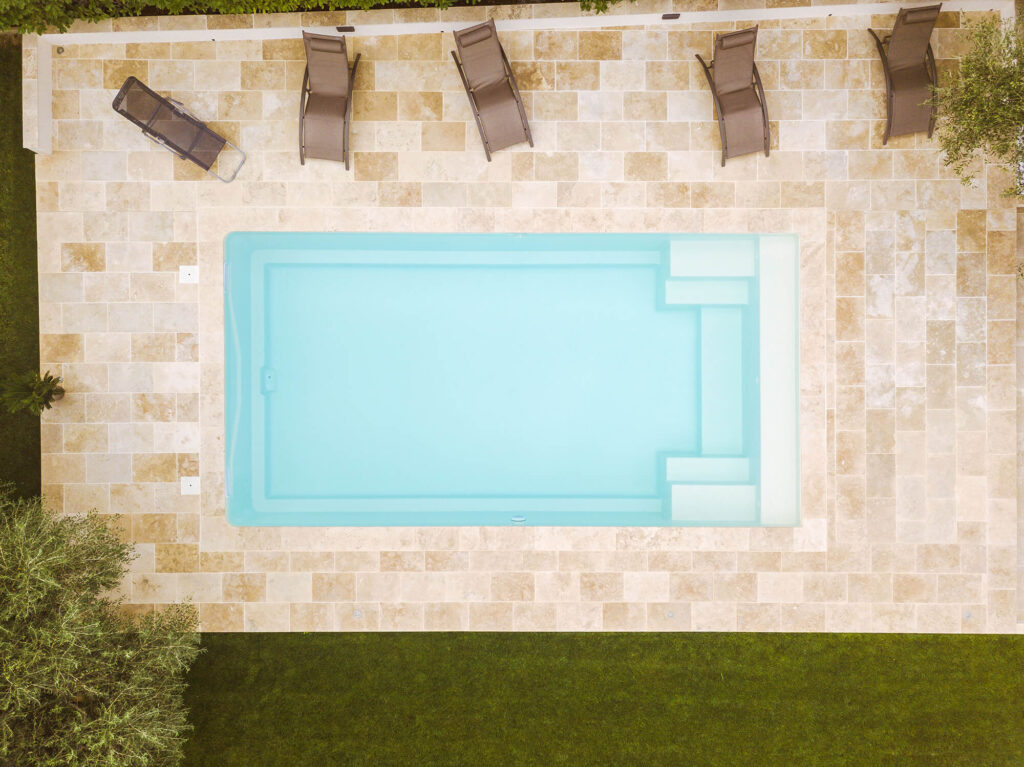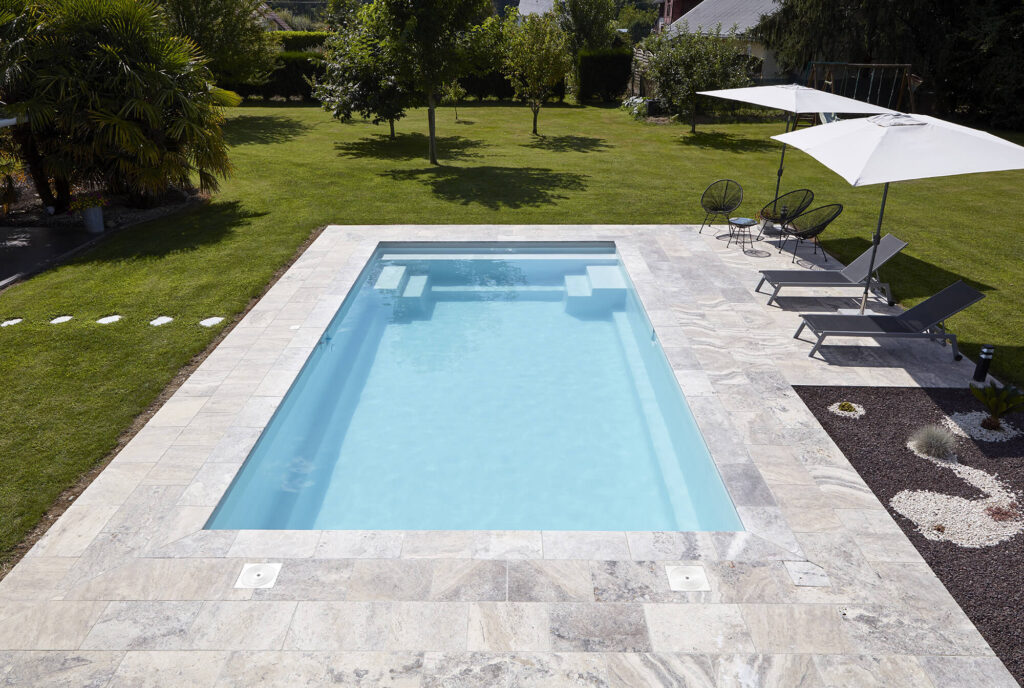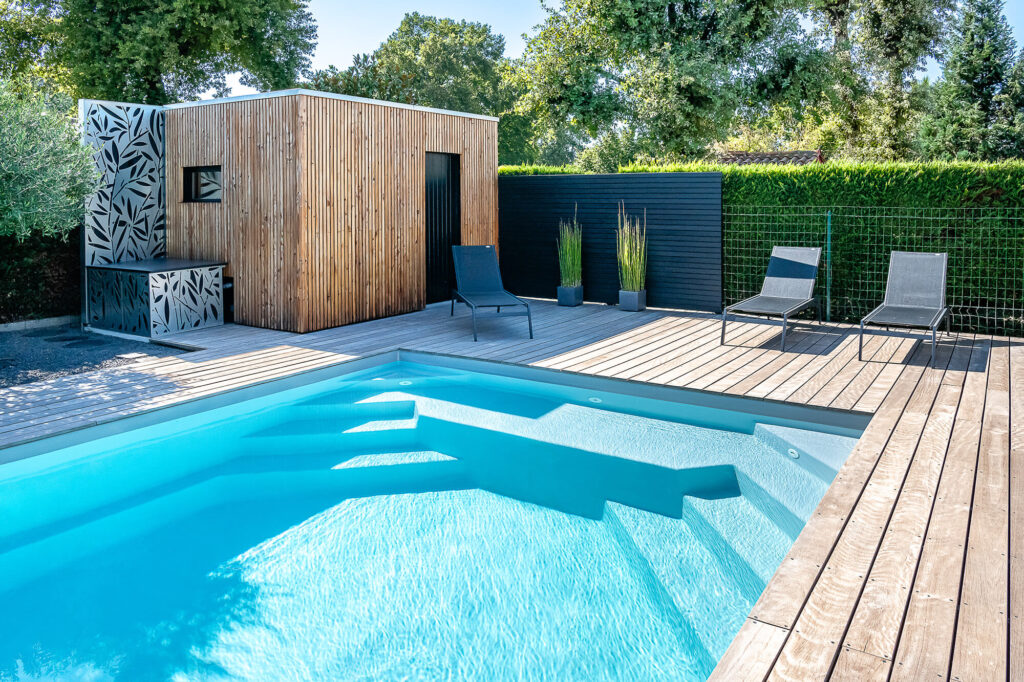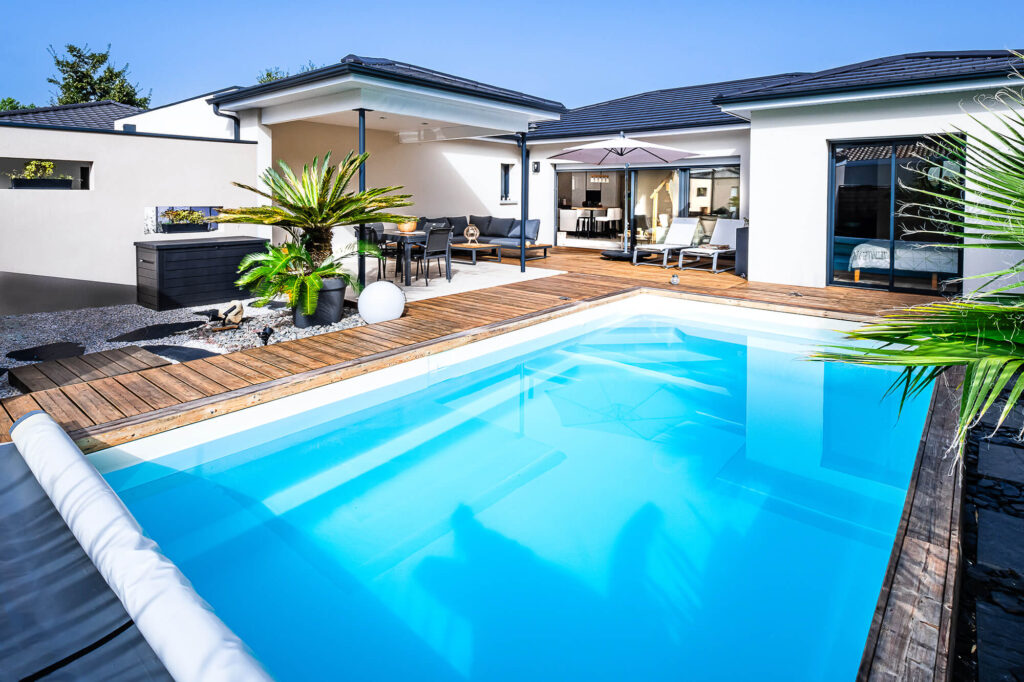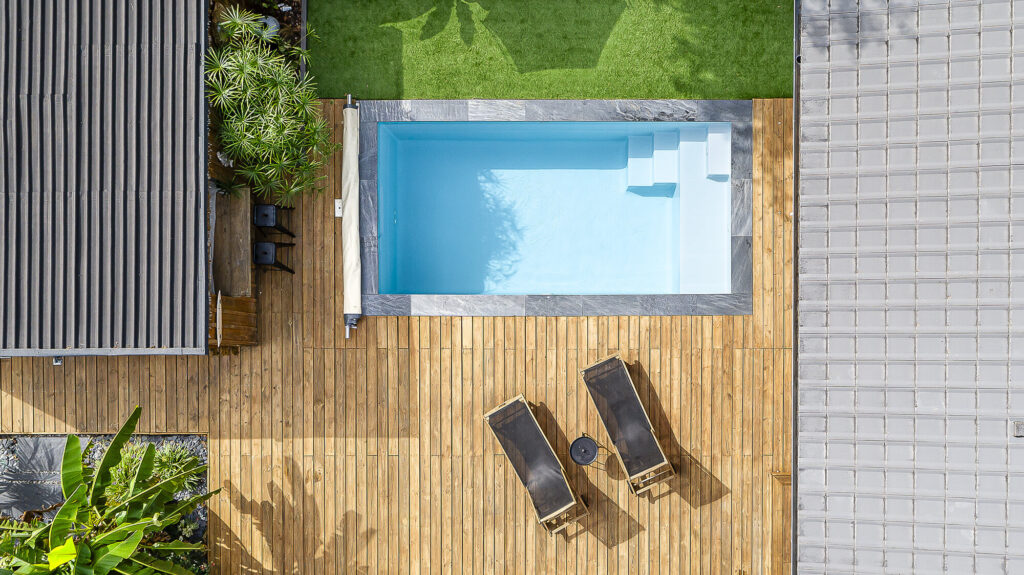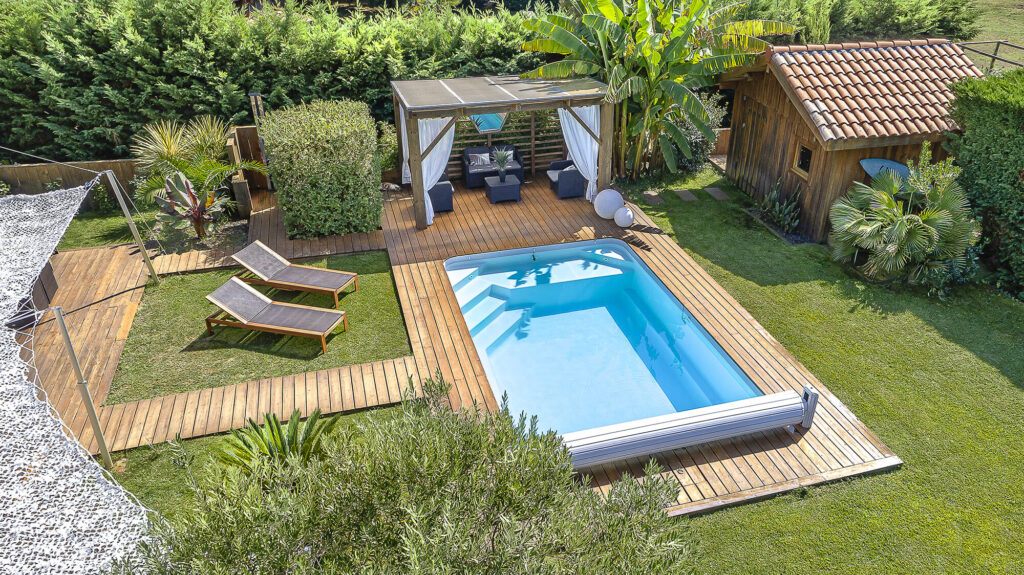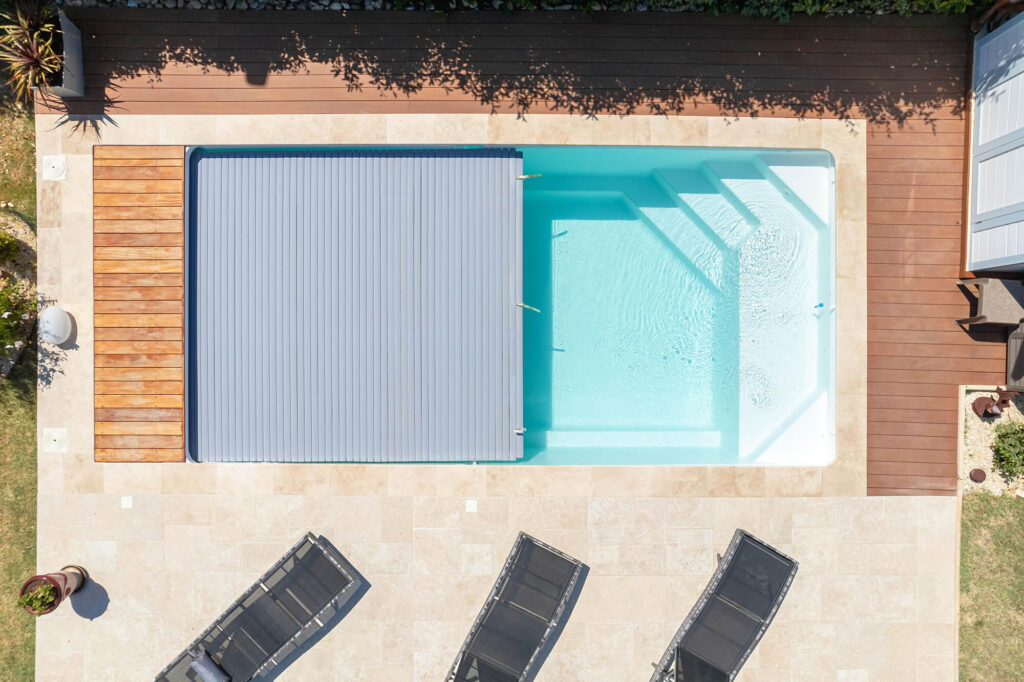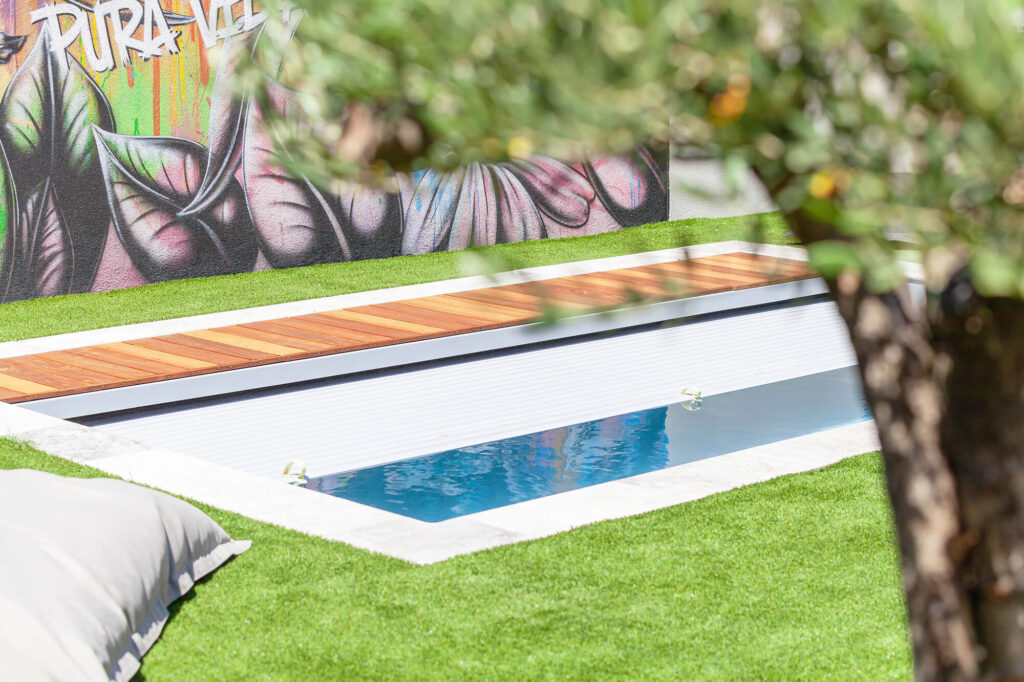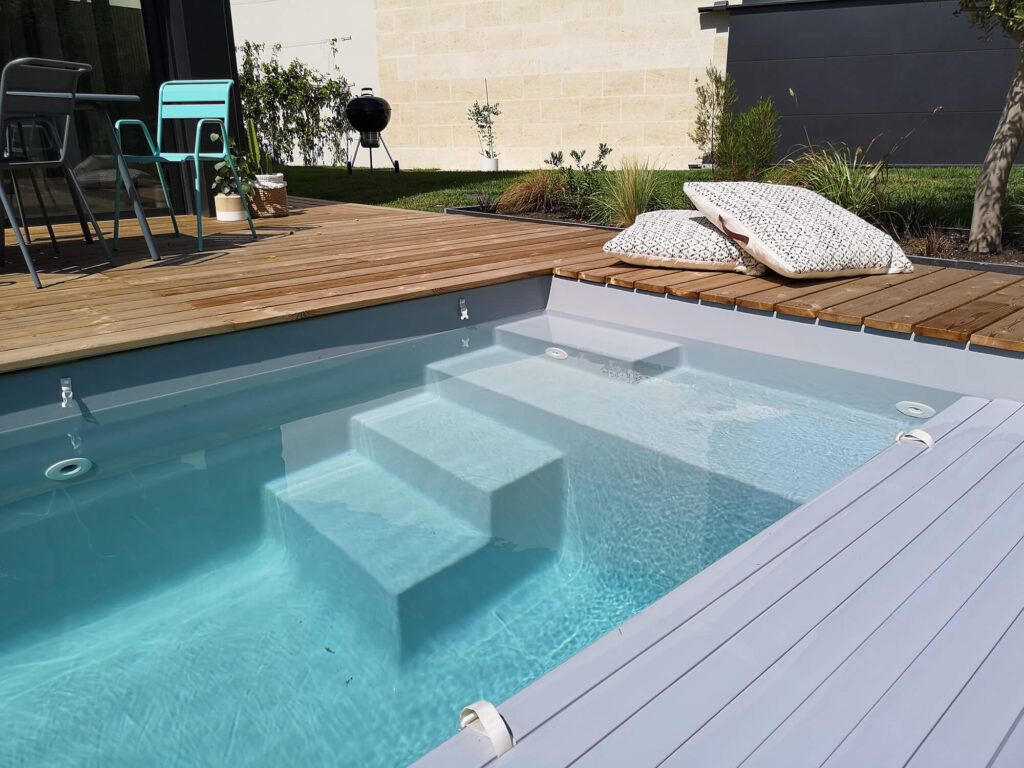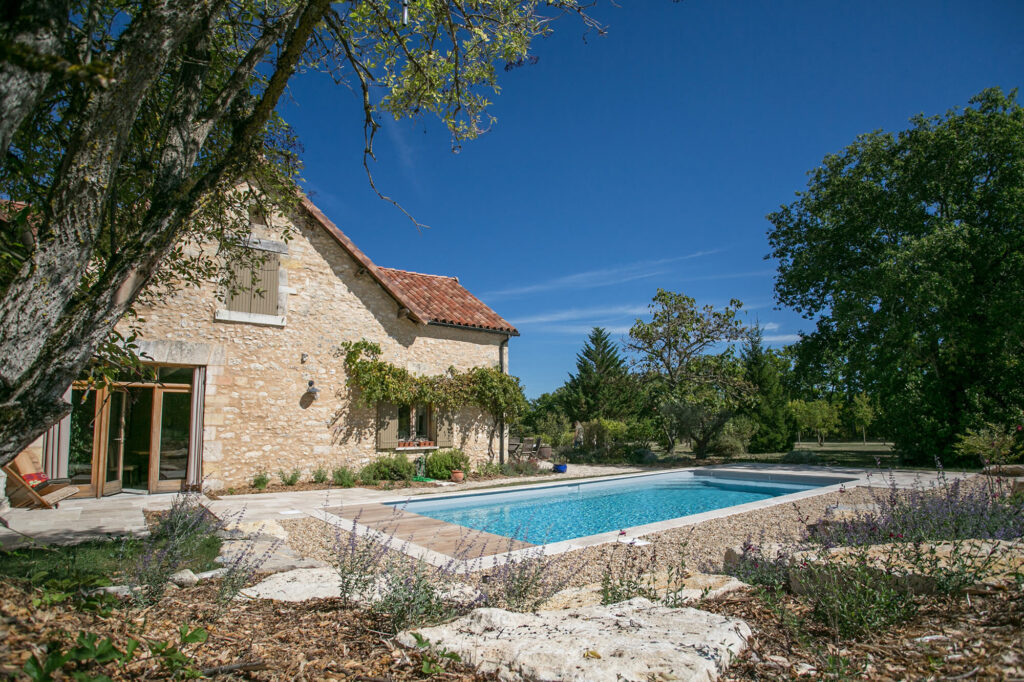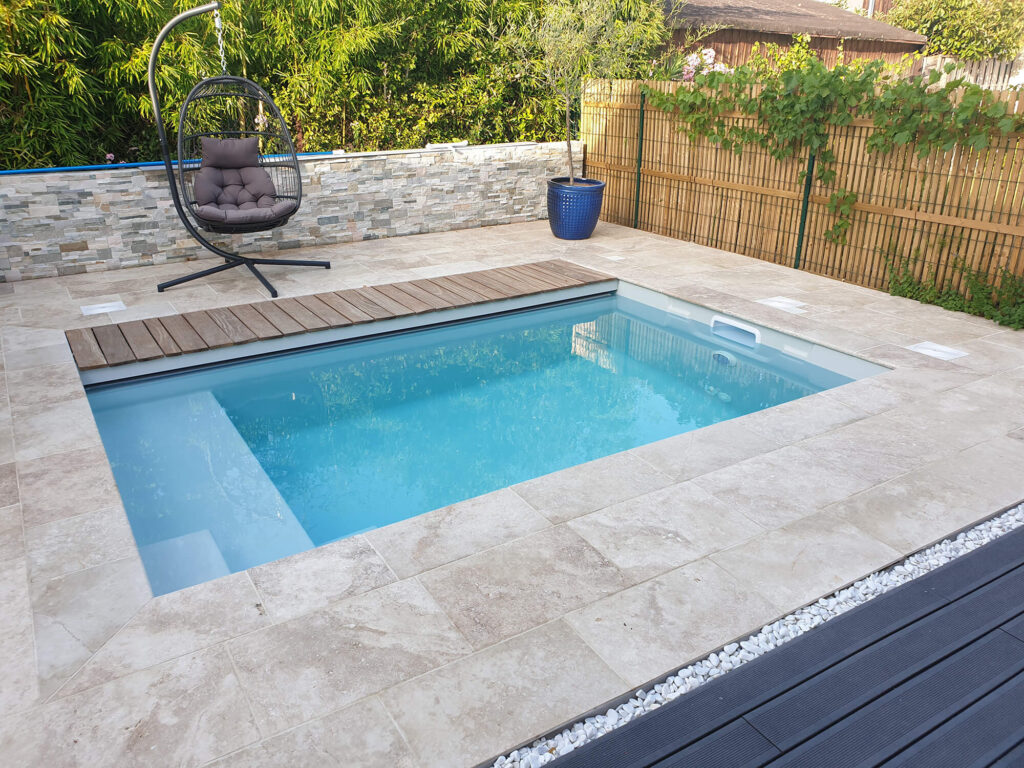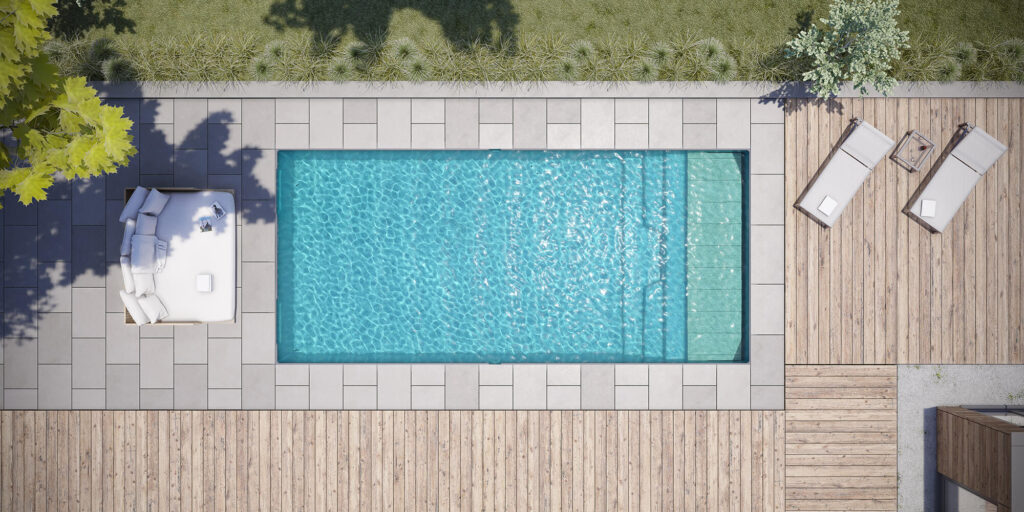It has been several years since you opted for chlorine treatment for the maintenance of your swimming pool. While this solution is by far the most advantageous in terms of cost and effectiveness, it is nonetheless aggressive... In fact, chlorine can make the water in your swimming pool smelly and irritating, to the point of causing allergic reactions in swimmers.
Fortunately, alternatives now exist to avoid these inconveniences when swimming; this is pool salt electrolysis . More environmentally friendly and without chlorine odor, this type of treatment has the advantage of naturally disinfecting pool water, without the risk of allergies or irritations.
But what are the differences between these two treatments? What are the steps to follow to switch your pool from chlorine to salt? How much does it cost?
Find out everything you need to know in the following lines…
Advantages, disadvantages, price… Why switch from chlorinated water to salt?
The advantages of a salt pool
For treated pools, free chlorine (which contains active chlorine) is responsible for disinfecting and eliminating various microorganisms. For salt pools, the process is not so different… Once the device is installed, the salt chlorinator transforms the salt into chlorine, without the need to add any chemical product. Thanks to a small amount of salt (7 times less than seawater), the electrolysis cells produce chlorine (sodium hypochlorite) and destroy all organic matter, bacteria, microorganisms, algae and other pollutants. Once its disinfecting action is complete, the chlorine will automatically recombine into salt under the effect of UV rays. And so on…
As you will have understood, thanks to the partial renewal of chloride ions, very little salt is consumed!
Effective for disinfecting pools, water treatment by salt electrolysis also provides many benefits for the skin. Unlike other chemicals, such as unstabilized chlorine, electrolysis does not dry out the skin and may even prevent the appearance of fungal infections on the skin! This is because pool water contains less chloramine, a chemical compound responsible for the characteristic chlorine smell that we all know. Just like seawater, people who suffer from psoriasis may see an improvement by switching from chlorine pool treatment to salt treatment.
Another advantage of salt pools, and not the least: they are more ecological. Indeed, when you have to evacuate the water from your pool, it is evacuated either into the soil of your garden or into the pipes. Unlike chlorine or bromine which contain polluting chemicals, pool salt does not harm the environment of your home and the neighborhood.
The disadvantages of a salt pool
On the downside, pool owners find that salt treatment tends to raise the pH level. To avoid unpleasant surprises, it is therefore advisable to regularly adjust the pH level or install a pH regulator . In addition, due to the corrosive nature of salt, this type of treatment requires frequent washing of the salt chlorinator , at the risk of damaging it.
Cost: switching from chlorine to salt pool, what about it?
The price is also a barrier to switching from chlorine treatment to salt electrolysis . In fact, the overall cost of a salt pool is generally higher than pools treated with chlorine or bromine treatments. This is explained by the purchase and installation price of the electrolyser, which is on average around €1,500. On the other hand, the daily operating cost is more advantageous; for comparison, you can find a 20 kg bag of salt for around €10. To buy chlorine, you will have to pay more than €100 for the same quantity (the price varies depending on the distributor and the technical characteristics of your pool).
How to switch your swimming pool from chlorine to salt?
To properly make the transition from chlorine to sodium chloride disinfection , some precautions must be taken. The transition must be done in several stages.
Step #1: Removing chlorine from the water
Before you begin the transition process, start by stopping the chlorine supply to your pool and letting the filtration system run . Monitor the chlorine level regularly using test strips; once it has dropped below 1 ppm, you can move on to the next step.
To speed up the elimination of chlorine, prefer the summer season when the sun is shining or during heavy rains.
Step 2: Purging the filtration circuit and installing the electrolyser
Is your pool devoid of chlorine? You can now purge the filtration circuit, dismantle the treatment distribution device (chlorine dispenser, chlorinator, etc.) and reconnect the pipe to the dismantled device.
Once this step is completed, you can install the salt chlorinator for swimming pools . For an optimal result, do not hesitate to call on a swimming pool professional for this step.
Step #3: Calculating the amount of salt needed
Your electrolyser is correctly installed in your pool, all you have to do is calculate the amount of salt needed. To do this, you need to know the volume of water in the pool (A) and the operating weight of your electrolyser (B). Then, the formula is simple: A x B = x kilos of salt
So, if your pool has a volume of 60 cubic meters and your electrolyser operates with 4 grams of salt, then you will need 4 * 60 = 240 kilos of salt.
Start your electrolyser once the salt has dissolved correctly in the water.
Step #4: Check the pH level of the water
As mentioned above, using salt to treat your pool can increase the pH level of the water. For this reason, you will need to regularly check the pH so that it is between 7.2 and 7.4; for greater ease, Aboral recommends installing a pH regulator , capable of detecting and managing pH variations autonomously.
Can you put shock chlorine in a salt pool?
The answer is yes! Indeed, your pool already uses a form of chlorine as a disinfectant, so adding a chlorine shock treatment will not have an impact on your salt pool. To do this, add the chlorine in tablets or granules, referring to the volume of your pool.
Don't forget to add an anti-algae product and filter your pool to completely eliminate algae and restore optimal water quality.
You now have all the information you need to change the treatment of your pool and enjoy your swimming with more comfort! To help you in your decision, do not hesitate to call on our team of experts. We are at your disposal for any additional information you may need!
Configure your pool online Back to all news
